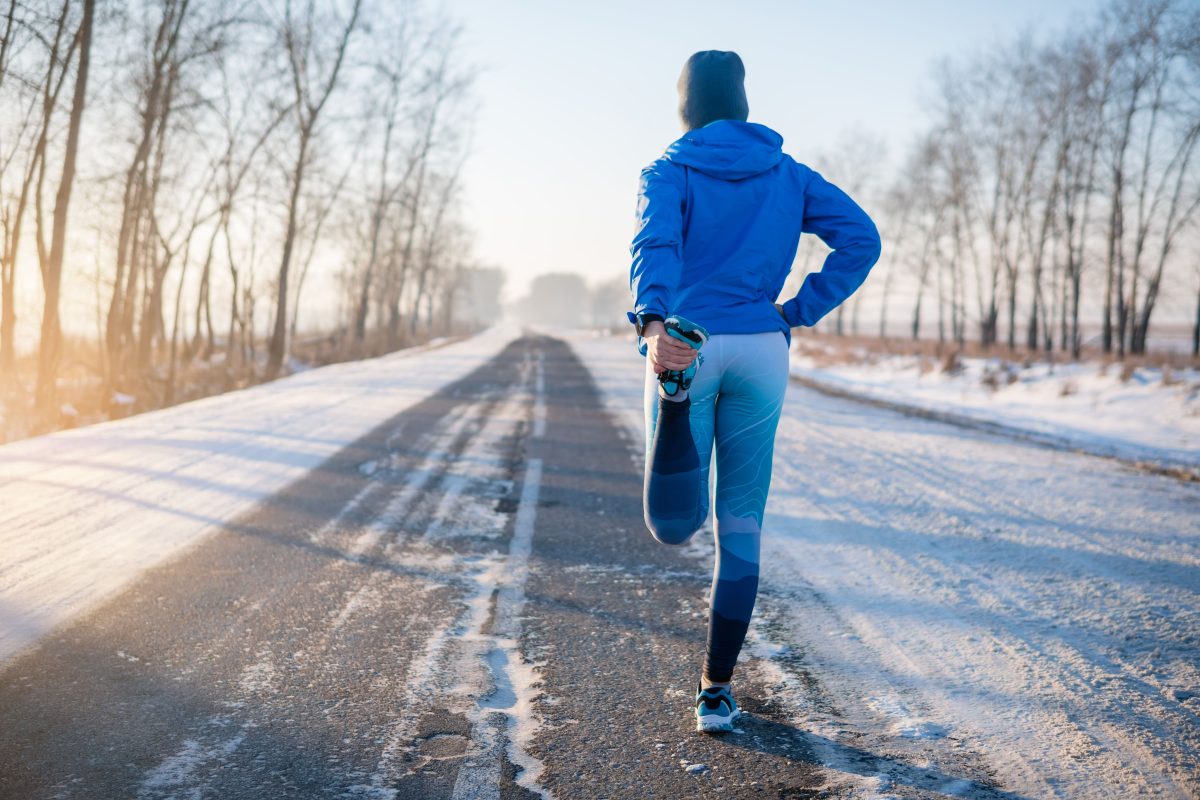As long as you pay attention to a few things, a bit of exercise is good for the body – even when your nose is running.
Active people not only have a fitter body than couch potatoes, they also have a stronger immune system. This results from sport improving the immune system. Exercise makes the body more resistant to germs.
At some point, however, sportsmen and sportswomen might still get it: a runny nose, a sore throat, a slight headache – should you really go running now? The answer is: Yes, but take it easy!
Fit for running?
Good preparation is the be-all and end-all. It is thus advisable to dress appropriately. For example, a scarf around the mouth ensures that the cold and dry winter air is not inhaled directly.
If you have a cold, the warm-up before the run is best done in the living room. If you already feel that you are not feeling as well as you need for training, this is a good point to stop – and stay at home to get some rest.
The same applies outside, of course: If, for example, at kilometer three, you notice that you can’t perform as usual, the best way to finish the run is to walk back home.
Recovery thanks to easy exercise
Amateurs, in particular, tend to “ignore” their body feeling when it indicates an illness. However, this is not a favor to their organism.
The moderate movement supports the immune defense during a cold. A side effect of running is that the nasal mucous membrane is better supplied with blood and the respiratory tract is well “ventilated”. Both promote recovery.
However, too intensive training has the opposite effect: it weakens the body and makes it susceptible to injury and infection. In concrete terms, this means no high-intensity training during colds, no plyometric training, no interval training and of course no participation in a competition. No wrong ambition at the wrong time!
No training in case of fever
Fever is – in the truest sense of the word – a no-go. The reason: during sport, the body core temperature rises. Fever plus sport can increase body temperature to such an extent that vital proteins in the body are destroyed. Also, the body is not ready for training if it generally feels ill, experiences dizziness, a sore throat, breathing problems or if the cough increases during activity. If at least one of these symptoms persists, it is better to pause.
Optimal recovery depends on many factors. Sufficient fluid, enough sleep and a balanced diet are the keys to a rapid return to your training routine.
Training during colds
In general, it is important not to push the limits during training if you have a cold. Slight sweating during running is good in this situation, but full sweating would be too much for the body.
A good guideline is the pulse rate. If the resting pulse in the morning is higher than usual, it might indicate that the body is still occupied with the immune defense. In this case, it is better to skip a workout.
People who know their heart rate zones (training pulse) on the running track, can orient themselves towards it during training. If the heart beats faster or the stage feels more strenuous than usual, then the body needs more protection – and this immediately, not after completing the run.
In addition to running, casual strength training, gymnastics or stretching can also be useful. Swimming would also be suitable from the point of view of physical exertion but is not advisable during a cold. The disinfectant in the water can irritate the respiratory tract additionally and the germs in the warm indoor pool will do the rest.
Tips:
- Highly intensive training sessions and competitions are forbidden during colds
- If it’s cold outside, it’s better to put on a layer more than usual if you have a cold.
- If you have a severe cold, drink enough, sleep enough, eat healthy, give yourself time and ensure that stress is kept within limits.
- A good training plan improves both your fitness and the immune system. Exercising at the right time and at the right intensity is more effective than always putting the pedal to the metal during training.

Author: Raphael Huber, MSc. Movement and Sports Science, MAS in Nutrition & Health, Medbase Winterthur WIN4


